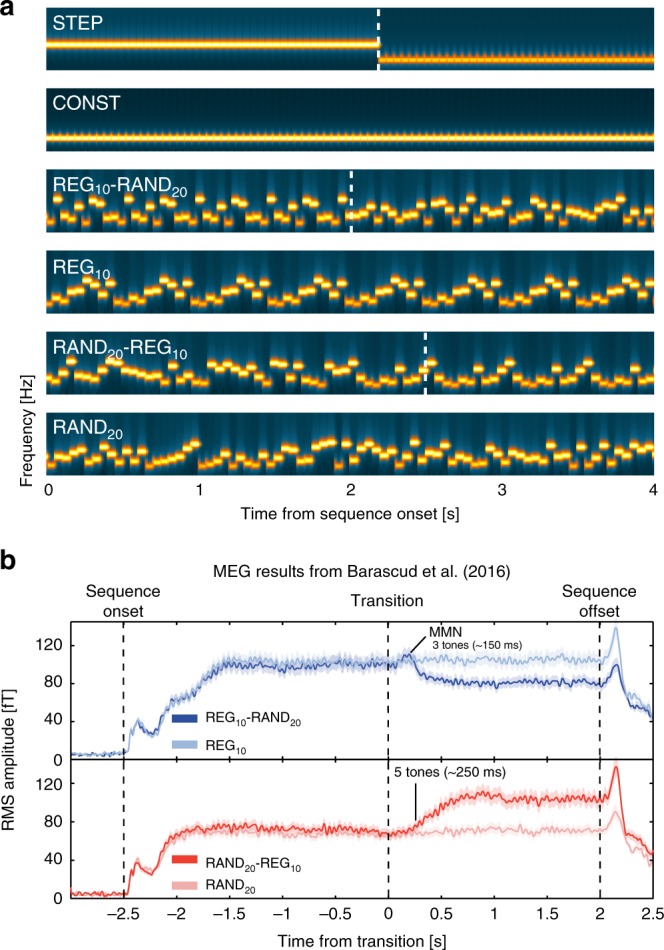Fig. 1.

Basic stimuli and brain responses recorded with MEG. a The stimuli were sequences of concatenated tone-pips (50 ms) with frequencies drawn from a pool of 20 fixed values. The tone-pips were arranged according to six frequency patterns, generated anew for each subject and on each trial: CONST sequences consisted of a single repeating tone; STEP contained a step change from one tone frequency to another; REG10 sequences were generated by randomly selecting 10 frequencies from the pool and iterating that sequence to create a regularly repeating pattern; RAND20 were generated by randomly sampling from the full pool with replacement; REG10-RAND20 and RAND20-REG10 sequences contained a transition between a regular and random pattern or vice versa. Transition times (between 2.5 and 3.5 s post onset) are indicated by a white dashed line. In RAND20-REG10 sequences, the transition time is defined as occurring after the first full regularity cycle, i.e. once the transition becomes statistically detectable. For presentation purposes only, the plotted sequence lengths are equal. Durations varied randomly between 5 and 7 s. b Brain responses (n = 13) to REG10-RAND20 (top panel) and RAND20-REG10 (bottom panel), together with their no-change controls, recorded with magnetoencephalography (MEG). Plotted is Root Mean Square (RMS) over channels, as an estimate of instantaneous power. The figures show the entire stimulus epoch, relative to the transition. Shaded areas are ±1 SEM. The transition from RAND to REG is associated with a gradual increase in sustained power from ~250 ms (5 tones) post transition. The transition from REG to RAND evokes an MMN-like response (at ~150 ms after the transition) followed by a sharp drop in the sustained response. These changes in power are hypothesized to reflect the instantiation (RAND-REG) or interruption (REG-RAND) of a contextual top-down model. See Barascud et al.22 for more details. See also Supplementary Figure 1 for an information theoretic28 characterization of the stimuli: the REG-RAND transition evokes an immediate increase in information content (IC) of post-transition tones. In contrast, because any REG pattern is equally likely under RAND, a gradual decrease in IC is seen for RAND-REG transitions as the model ‘discovers’ the predictable structure within the sequence
